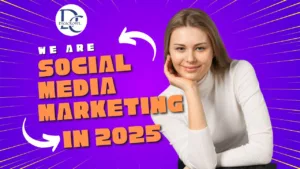
"How YouTubers Avoid Strikes on Copyrighted Videos"

How YouTubers Avoid Strikes on Copyrighted Videos
The copyright strike on YouTube is a major problem, particularly for YouTubers who use copyrighted content. If you are a content creator and want to prevent YouTube copyright strike hack on your videos, you need to learn special techniques and YouTube copyhack 2025 tactics. This article explains how YouTubers avoid strikes on copyrighted videos and the strategies they use to prevent them.
What is a Copyright Strike?
YouTube has a very strict copyright policy. If you use copyrighted content without permission, the content owner can claim copyright on your video. To prevent copyright infringement, YouTubers must be aware of the rules and use YouTube copyright checker tools.
Are YouTubers Subject to Copyright Violations?
Let’s understand how YouTubers upload copyrighted content and still avoid strikes.
1. Video Editing Tricks (Transformative Content)
If copyrighted material is used, it should be modified to create transformative content, meaning the original content is changed and new elements are added. Here are some common techniques YouTubers use:
Cropping & Resizing – The original video is zoomed in or cropped to avoid detection by the system.
Speed Change – Changing the video speed, either increasing or decreasing it.
Filters & Overlays – Using animations, color grading, and blur effects.
Background Music Change – Replacing the original music or altering its pitch.
2. Using the Fair Use Policy
The fair use policy allows limited use of copyrighted content under specific conditions. If your video falls under education, commentary, criticism, or parody, it may be considered fair use. However, fair use is not always safe, so using a YouTube copyright checker is essential.
3. Using Copyright-Free Content
Many YouTubers use copyright-free music, videos, and images to avoid strikes. Creative Commons (CC) licensed content and royalty-free media are excellent alternatives to copyrighted materials.
Here are some popular websites offering copyright-free content:
Pixabay – Free images and videos.
Pexels – Free stock footage.
Free Music Archive – Royalty-free music.
YouTube Audio Library – Free background music.
4. Using Short Clips
YouTube’s algorithm is weaker at detecting short clips. Many YouTubers use only 5–10 seconds of copyrighted video to reduce the risk of a strike. However, this trick does not always work, so it should be used carefully.
5. Adding Voice-Over and Commentary
Adding a voice-over or commentary can help in using copyrighted content safely. This technique is widely used in reaction videos, analysis content, and movie reviews. It can also help classify the video under fair use.
6. Using Copyright Checking Tools
If you are unsure whether your video contains copyrighted content, you can use YouTube copyright checker tools and other online platforms.
Here are some useful copyright-checking tools:
YouTube Studio’s Copyright Check Tool – Automatically scans for copyright issues before publishing.
Tunefind – Helps check if music is copyrighted.
Shazam & ACRCloud – Identifies copyrighted background music.
7. Disabling Monetization
Some YouTubers disable monetization on videos containing copyrighted content. This can sometimes prevent copyright owners from filing a complaint. However, this method does not always work, and YouTube may still issue a strike.
8. Getting Permission or Licenses
If you regularly use copyrighted content, the best approach is to get permission or buy a license from the content owner. Many music and video creators offer paid licenses that legally allow you to use their content.
9. Filing a Dispute or Appeal
If you receive a copyright strike and believe your content falls under fair use, you can submit a dispute on YouTube. The platform provides a review process where you can present your case.
Conclusion
If you are a YouTuber and want to avoid YouTube copyright strike hack, you need to use smart strategies.
“YouTube copyright strike hack 2025”
And YouTube copyright checker tools can help detect and prevent copyright violations.
Key Takeaways:
Use transformative content (editing, speed changes, filters, etc.).
Apply the Fair Use Policy where possible.
Use copyright-free content whenever you can.
Utilize voice-overs and short clips to modify content.
Check for copyrighted content using online tools.
Disable monetization or get permission from the owner.
By implementing these techniques, YouTubers can upload content safely and avoid copyright strikes!
1. Fair Use Doctrine
Fair use allows copyrighted material to be used legally for purposes like commentary, criticism, education, or parody. To qualify, YouTubers:
- Add transformative value through narration, analysis, or reactions.
- Use short clips instead of full-length content.
- Ensure their content does not replace the original work’s market value.
2. Modifying the Content
Creators alter copyrighted videos to bypass YouTube’s Content ID system by:
- Changing video speed or audio pitch.
- Cropping, zooming, or adding filters.
- Using overlays or transitions to make the content unique.
3. Licensing Copyrighted Material
Some YouTubers legally purchase licenses for music, clips, or images from platforms like Epidemic Sound, Storyblocks, or Artlist. This prevents claims and allows monetization.
4. Revenue Sharing Agreements
Music labels and studios sometimes allow YouTubers to use copyrighted content in exchange for ad revenue sharing, ensuring both parties benefit.
If you want to Grow like a youtuber then DigiCrowl can help in
YouTube Copyright Strike Hack
YouTube Copyright Hack 2025
YouTube copyright checker
How YouTubers Avoid Strikes on Copyrighted Videos
how to avoid strikes on copywrite video
Some creators avoid direct monetization and earn money through sponsorships, merchandise sales, or Patreon memberships.
Conclusion
While YouTube’s copyright policies are strict, creators use fair use, licensing, editing, and indirect monetization to upload copyrighted content without receiving strikes.





